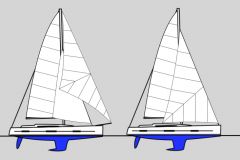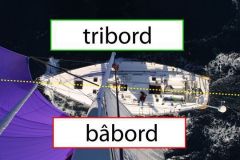General information on genoa trimming
In light winds, to succeed in accelerating, we adjust the sails of a boat like the wings of an airplane at takeoff. The plane, to find power, to gain support, will arch its wings. We will do the same with our sails and the genoa in particular which "pulls" the boat.
When the wind picks up, quickly, we try not to heel too much. In order to cope with the oversteer, the sails must offer less lift. Just like an airplane that has reached its cruising speed, you need less support than at take-off. You can limit the power by flattening the sail and release the excess energy by opening the chute.
In the light wind : we would like to lie down
We try to increase the power by digging the sail and closing the leech.
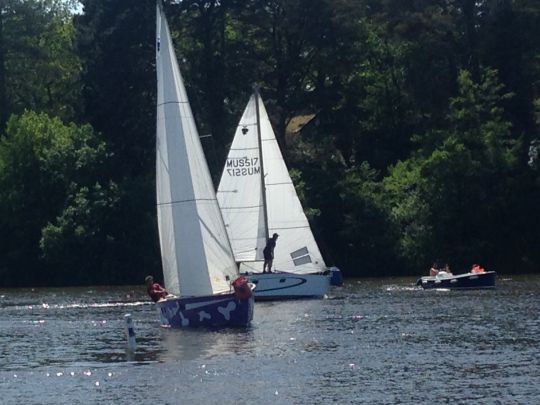
In the stronger wind: we would like to stop heeling.
The goal is to limit the power by flattening the sail and opening the leech.
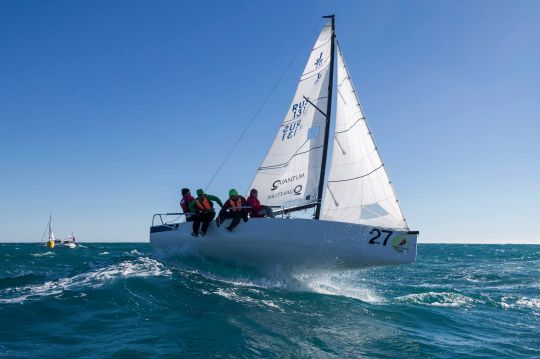
Tools to trim the genoa
The genoa sheet
When it comes to genoa trimming tools, the first and sometimes only tool used is the genoa sheet. Usually, it comes back on a winch and allows to trim the genoa with a few turns of the crank. If this adjustment is easy, you will be able to get much more out of the sail with the additional adjustments below.
The genoa track and its roller (pull point)
The genoa track allows you to move the roller, the clew of the sheet on the deck. By moving the roller forward and backward, you affect the height of the genoa clew. Moving the roller forward will lower the clew of the genoa, moving the roller back will raise the clew. Lowering the clew will close the leech of the sail and therefore conserve power. By raising the clew, we open the leech of the sail and the power finds an exit from the top.
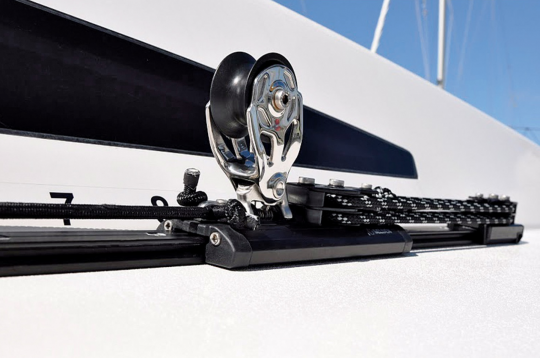
The genoa and its halyard have an elasticity that can be fought or used. Because of the elasticity, as soon as the wind strengthens, the sail's leech (distributed from top to bottom), will progressively move back. In doing so, the leech of the sail closes and yet it is the opposite that we are looking for.
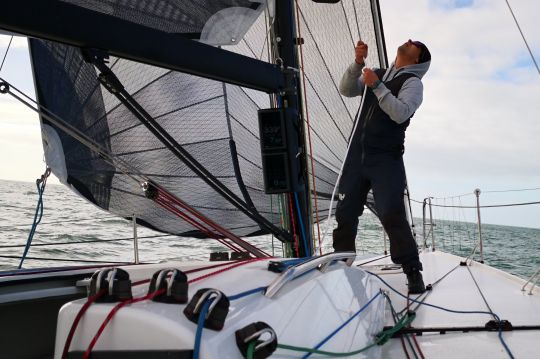
Adjust your halyard tension according to the evolution of the wind
When the wind increases, the first step is to resume elasticity of the halyard that has been detained under the increasing wind load. In practice, this corresponds to removing the visible horizontal folds on the sail.
In a second time, the wind gained again in intensity. The halyard tension is again applied, but this time it is to deform the fabric of the genoa and force the trough to return to the front . In practice, the halyard is taken up again until well-marked vertical folds appear.
How to play on the hollow of the Genoa?
When the wind strengthens :
- Halyard: The genoa halyard is taken up, either to limit the horizontal folds or to create vertical folds along the luff.
- Pulling point : We move back the roller to open the fall and release the power
When the wind dies down :
- Pulling point : We advance the roller to close the fall and keep the power
- Halyard: The halyard is slackened to the limit of the horizontal folds along the luff.
Tips and tricks: adjusting the sail draft is adjusting the heel of the boat. We release energy when the heel becomes excessive. We look for power as the heel decreases.

 /
/ 





